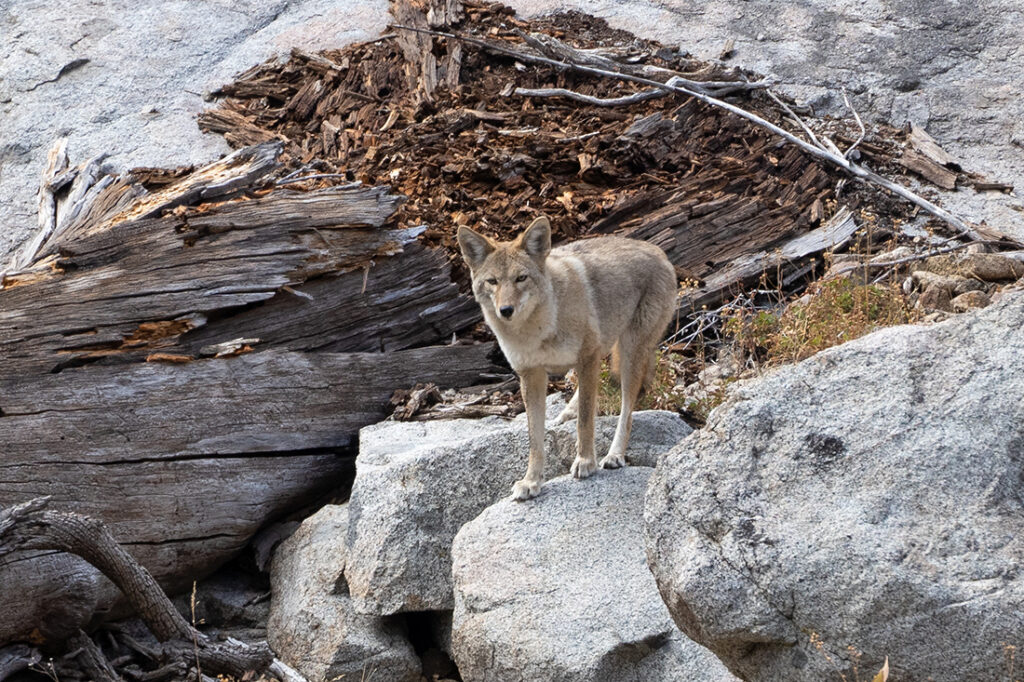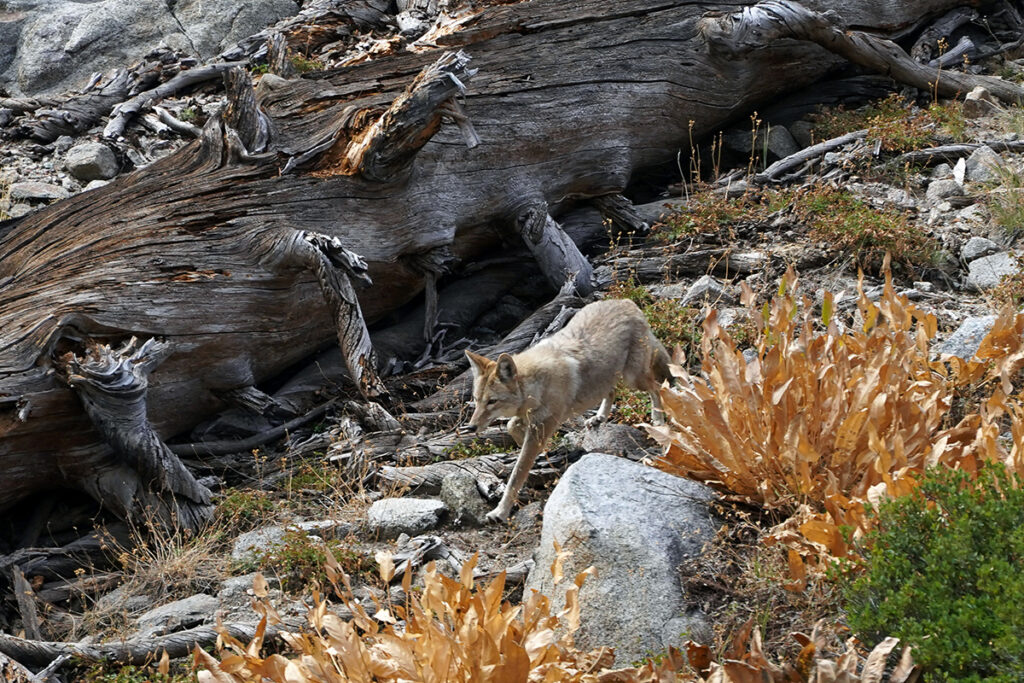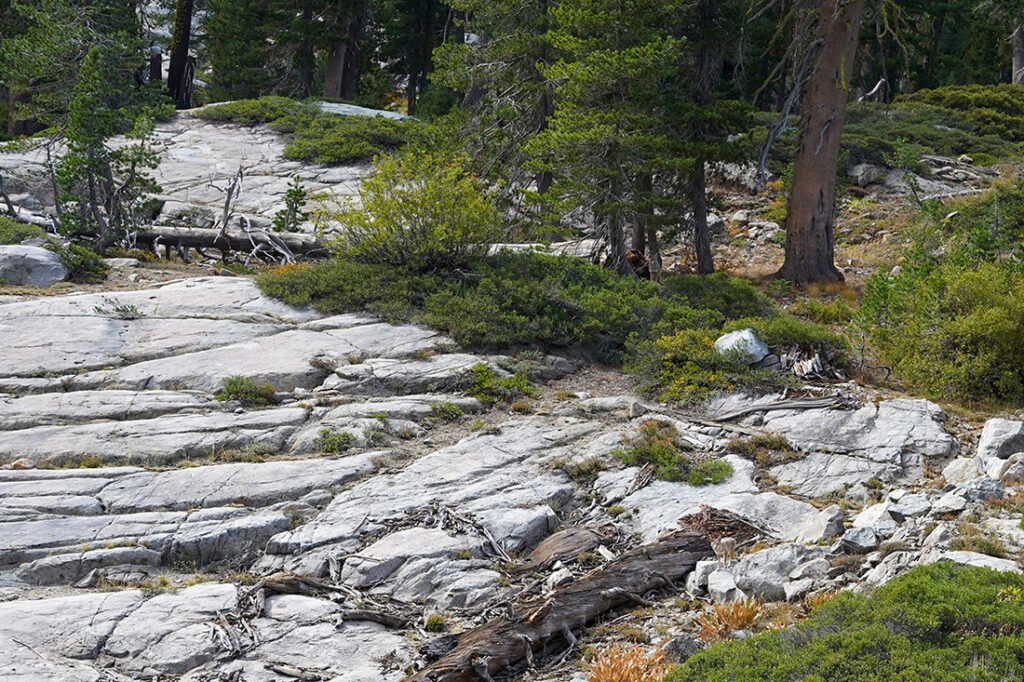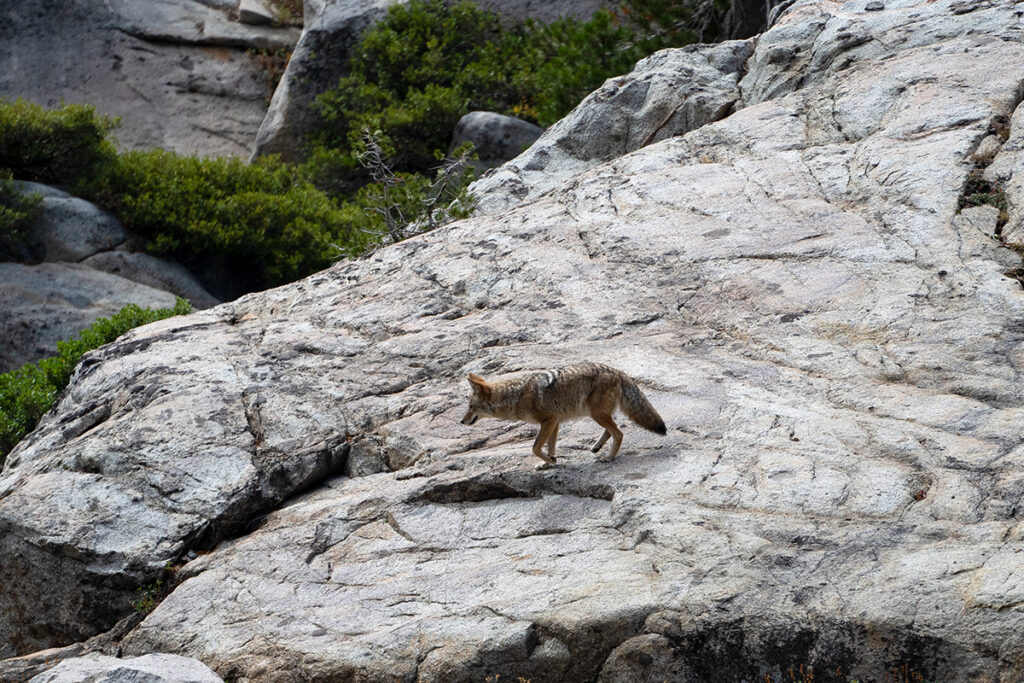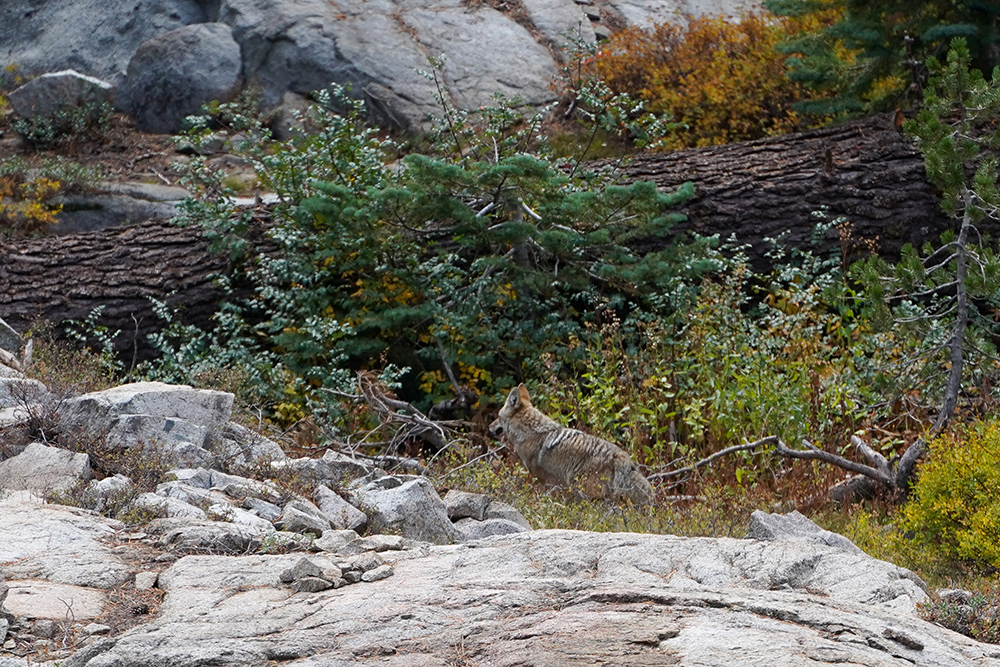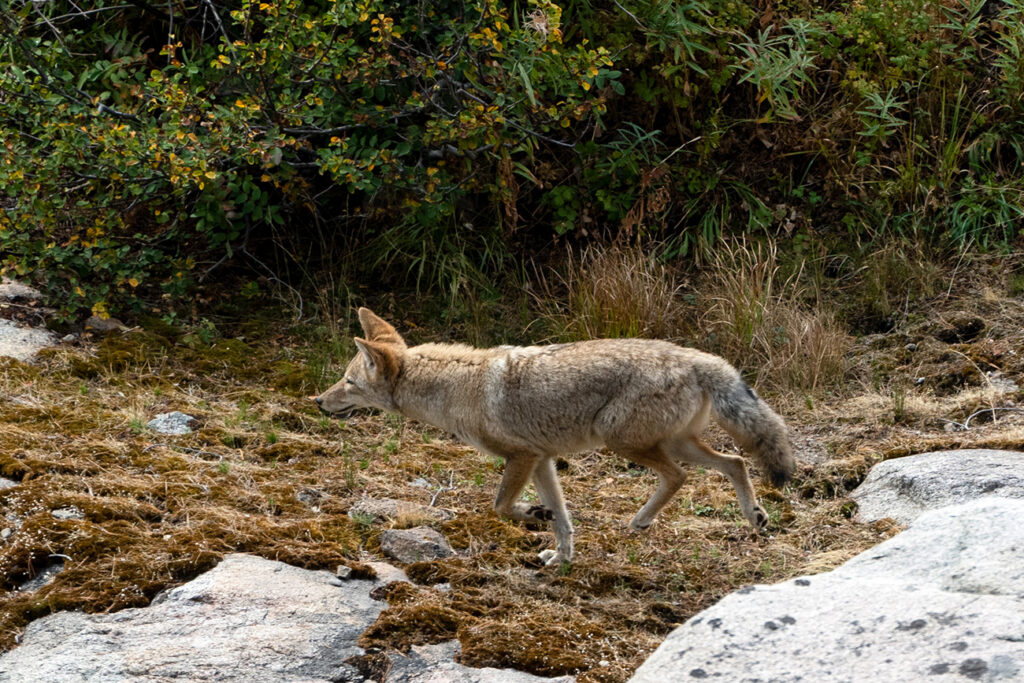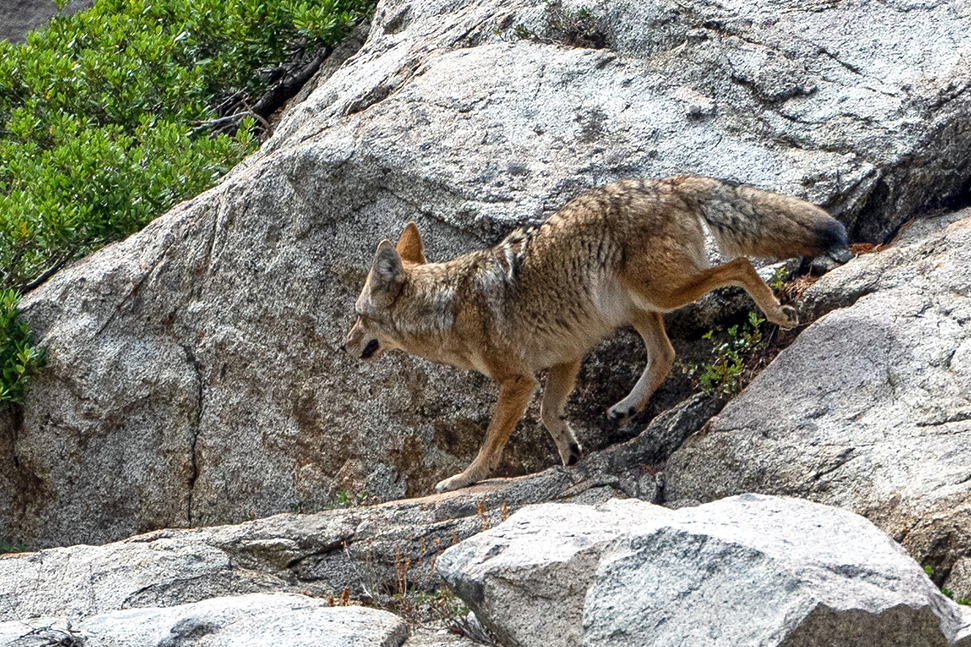Yesterday on a walk near Lake Tahoe (around where Alpine Meadows meets the Granite Chief Wilderness), I came across two coyotes. I saw the first about 100 meters away, trotting over the granite. Without much evidence, I’ll describe her as a female (see the notes). She paused to look at me…
.. and moved on, threading in and out of bushy areas and gullies.
Here is the scene. The coyote is lower right.
Then I saw, some way behind her, another coyote, larger and grayer.
They closed, without actually getting close, and it became likely that they were together, a pair of some kind. Looking initially at photos of this second one, I wondered if this was a wolf rather than coyote, given the size and colors, but the pointed ears are apparently entirely a coyote feature (and this would have been the closest wolf ever seen round Tahoe).
I don’t have a photo of both in the same frame, but there’s a pair of photos 15 seconds apart where they’re pretty close. Coyote 1 then Coyote 2:
I assumed they were a pair, but knew I could not be sure. I think that one looked toward the other, the first looking to the second. Very soon after – it was only minutes before they were far away – I was reminded of the last scene in chapter 6 of Living On Earth, the third book in the trilogy that began with Other Minds. That passage describes a pair of cheetahs in the Maasai Mara in Kenya, jogging together just yards apart. The cheetahs were brothers who had formed a permanent bond. In the case of the Tahoe coyotes, they were likely to be a male-female pair. The websites I’ve looked at today have not been in complete agreement about coyote pairs, but it seems likely. And as with the Kenyan cheetahs and various parrots I’ve watched, the sense of companionship in a wild landscape was suddenly moving. Their bond – though elusive, uncertain – seemed to frame the whole scene.
One more of Coyote 1:
And Coyote 2:
_________________________
Notes
1. In the book Metazoa I often had to make pronoun decisions about animals whose behavior I was describing. I was reluctant to use “it,” and generally like the neutral use of “they” (though in 2020 this felt different from 2025), but don’t think it works well in nonhuman contexts. I had a footnote explaining my policies: If there was any evidence, even very slim, that hinted at the sex of the individual, then I chose language to go with that sex. (I’d not do this if the sexual uncertainty mattered for the story.) In this case, I read that coyotes are not greatly sexually dimorphic, but males are bulkier. In the case of this pair, Coyote 2 was quite a bit bulkier than Coyote 1.
2. A North Carolina site says that coyotes are monogamous; a National Park Service site says they form “loose pairs” but often hunt alone. This paper says that observational studies suggest coyotes are monogamous, but not much is known.
If you write a comment on the post from this front page, the letters will look very small as you type. Write from here to avoid the problem.

